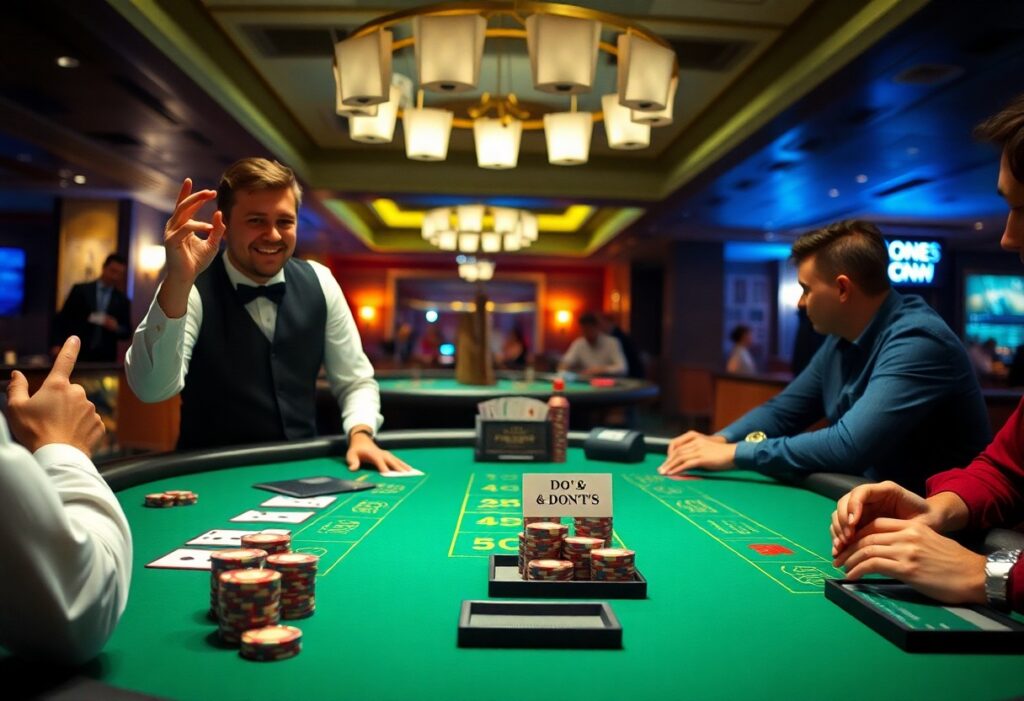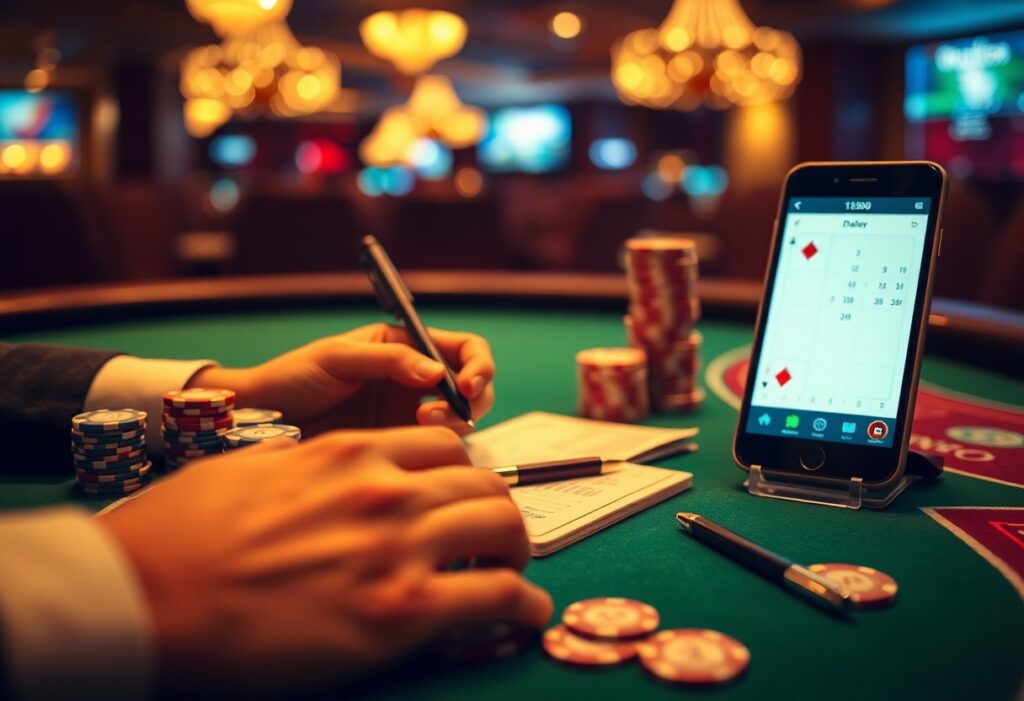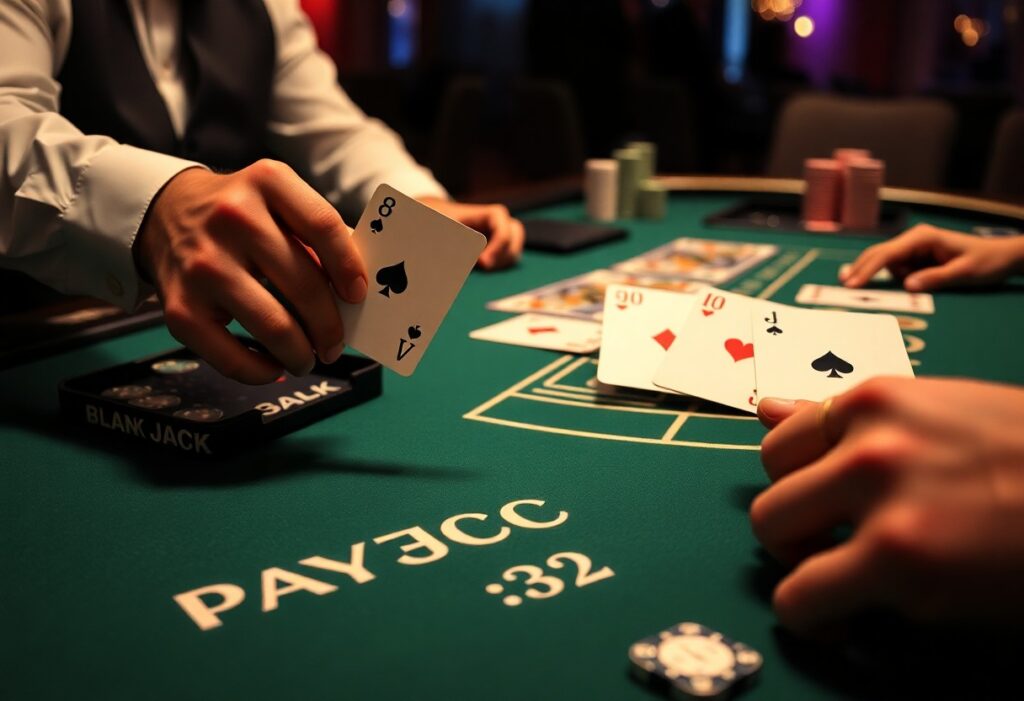
Most players underestimate the psychological aspects of poker, which can be the difference between winning and losing. Understanding how to read your opponents is important for gaining an edge in any casino setting. By analyzing body language, facial expressions, and betting patterns, you can make more informed decisions and enhance your overall game. The ability to discern bluffs from genuine hands not only improves your strategy but also protects your bankroll. Dive into this guide to master the art of psychological assessment at the poker table.
Understanding the Psychology of Poker
In poker, players are not just competing against cards but also against the minds of their opponents. Each decision, from betting patterns to facial expressions, reveals insights into a player’s state of mind. Understanding these psychological components can significantly enhance one’s ability to predict actions and makes for a more strategic game. Emotion and mental fortitude often play equal roles as cards dealt, providing an edge in readjusting tactics and exploiting weaknesses.
Types of Players
Identifying the various types of players at the table can inform your strategies and adaptations during gameplay. Each player’s tendencies offer distinct patterns that can be exploited for gain.
- Aggressive Players: They frequently bluff and raise, making them unpredictable.
- Passive Players: Tend to call rather than bet, often making them easier to read.
- Loose Players: Play many hands, leading to high variance and potential success.
- Tight Players: Selective in their hands; they often have stronger cards at showdown.
- Hyper-Aggressive Players: Push boundaries, creating chaos but can be countered with patience.
This diversity requires adaptive strategies for effective counterplay.
| Player Type | Characteristics |
| Aggressive Players | Frequent bluffs and raises |
| Passive Players | Prefer calling over betting |
| Loose Players | Play many hands |
| Tight Players | Selective with strong hands |
| Hyper-Aggressive Players | Create chaos with aggressive tactics |
Psychological Factors in Gameplay
Psychological elements such as stress, fatigue, and motivation can greatly impact a player’s performance in poker. Understanding these influences allows one to capitalize on an opponent’s vulnerabilities, leading to better decision-making.
- Emotional Control: Managing emotions helps prevent costly mistakes.
- Table Presence: Awareness of dynamics at the table can shift gameplay perspectives.
- Focus and Concentration: Sustained attention leads to better reads and decisions.
- Risk Tolerance: Each player’s comfort with risk impacts their playing style.
- Bluffing Psychology: Understanding the nuances of bluffing enhances your strategies.
Any psychological inconsistency can be exploited for advantage in the game.
Delving deeper into psychological factors reveals how they shape player interactions and decisions. Understanding the mental state of opponents, including their confidence levels and emotional responses, can provide valuable insights for strategic adjustments. Players who exhibit signs of stress or discomfort may be more likely to fold, while those who display overconfidence might be susceptible to counter-strategies. Recognizing these subtleties enables the exploitation of behavioral trends for enhanced gameplay.
- Player Observations: Watch for signs of stress or confidence during play.
- Behavioral Patterns: Identify tendencies that emerge as players adjust their gameplay.
- Emotional Responses: Differentiate between genuine hands and bluffs through observed reactions.
- Adjustment Strategies: Modify own tactics based on opponent’s psychological state.
- Situational Awareness: Anticipate actions based on the psychological environment at play.
Any keen observer can utilize these insights to improve their poker skills significantly.
Reading Opponents: Techniques and Strategies
Successfully reading opponents requires a blend of keen observation and strategic insight. Developing a robust understanding of your rivals can often tip the scales in your favor, enabling you to make informed decisions. Employ various techniques such as behavior analysis, pattern recognition, and emotional intelligence to gain an edge and anticipate your opponents’ moves.
Observational Tips
Enhanced observational skills can uncover valuable insights into opponents’ gameplay. Focus on betting patterns, reaction times, and table talk to gauge confidence levels. Additionally, maintaining a calm demeanor can aid in assessing others more accurately.
- Pay attention to changes in posture
- Observe eye movement during critical moments
- Take note of facial expressions when making decisions
Perceiving these elements can lead to a deeper understanding of your opponents’ emotional states and intentions.
Body Language Cues
Body language serves as a rich source of information at the poker table. Different players exhibit unique non-verbal signals indicative of their mental state. For instance, a player who is confidently leaning forward might be stronger than one who appears withdrawn or apprehensive. Recognizing specific body language cues can provide critical insights into whether an opponent has a strong hand or is bluffing. Look for signs such as tension, fidgeting, or crossed arms, which often signal discomfort or uncertainty, while open gestures may indicate aggressive confidence.
Step-by-Step Guide to Reading Your Opponent
| Step | Description |
|---|---|
| 1. Observe Betting Patterns | Track how your opponents bet pre-flop and post-flop for insights into their hand strength. |
| 2. Note Body Language | Pay attention to physical cues, as nervous or confident gestures can indicate hand strength. |
| 3. Analyze Player Types | Identify whether your opponents are aggressive, passive, tight, or loose to strategize effectively. |
| 4. Adjust Your Strategy | Use gathered information to exploit weaknesses in opponents’ play styles. |
Pre-Flop Analysis
Pre-flop betting provides the first insight into an opponent’s hand. Attentively observe the amount they raise, whether they call or fold, and their position at the table. For example, a player who consistently raises from early positions is likely holding strong cards, while one who limps in may have a weaker hand or is attempting to trap others.
Post-Flop Observations
Once the flop appears, player behavior reveals even more. Assess the timing of their bets, the size of their raises, and any changes in demeanor. A quick check might indicate a weak hand, whereas a substantial bet could signal strength or a draw. It’s vital to remain vigilant and adaptable, as each action provides valuable information on their intentions.
Post-flop observations can further differentiate bluffs from genuine hands. If a player bets aggressively following a scare card, they may attempt to represent a strong hand. Conversely, a player who checks after a potential flush on the board could either be hoping to trap or is uncertain about their hand. By studying trends in these actions, players can make informed decisions, enhancing their ability to exploit the psychological aspects of the game.
Factors Influencing Opponent Behavior
In the intricate game of poker, various factors influence opponent behavior. Understanding these can provide key insights into their potential moves and strategies. Some of these factors include:
- table dynamics
- player background
- emotional states
- betting patterns
The combination of these elements shapes how players interact and react during the game.
Table Dynamics
Table dynamics involve the interplay between players’ styles and personalities. This environment can create opportunities for players to capitalize on weaknesses by reading tells or behavior patterns. Observing how players adjust their strategies based on the table’s flow and mood can lead to significant advantages.
Player Background and Experience
A player’s background and experience can heavily influence their gameplay. Factors such as previous tournament results, time spent playing, and general attitude toward risk reveal a great deal about their strategy. Those who have faced tougher competitions may exhibit a higher level of skill and adaptability.
This understanding of player background encompasses not just experience, but also the psychological makeup and dependency on factors like bankroll management and playing style. For instance, a seasoned player may display a more calculated and aggressive approach compared to a novice who tends to play more conservatively due to their inexperience. Observing these factors in action can guide decisions and predictions about their future moves.
Pros and Cons of Different Approaches
| Approach | Pros and Cons |
|---|---|
| Aggressive Play | Pros: Can intimidate opponents, maximize winnings. Cons: High risk, potential for large losses. |
| Passive Play | Pros: Limits losses, allows for careful observation. Cons: Missed opportunities to capitalize on strong hands. |
| Bluffing | Pros: Can win pots without strong hands, confuses opponents. Cons: Risk of getting called, leading to heavy losses. |
| Reading Opponents | Pros: Informed decisions, better understanding of strategies. Cons: Misreading could lead to costly mistakes. |
| Table Image | Pros: Manipulate opponent perceptions for advantage. Cons: Constant adjustment needed, can be difficult to maintain. |
| Game Theory Optimal (GTO) | Pros: Balanced strategy, difficult for opponents to exploit. Cons: Complex to execute, requires deep understanding. |
| Contextual Awareness | Pros: Improve situational decision-making. Cons: Easily overlooked under pressure, demands constant vigilance. |
| Position Strategy | Pros: Leverage position for strategic advantage. Cons: May lead to overconfidence, vulnerable if position changes. |
| Adjusting Strategies | Pros: Flexibility to exploit opponents’ weaknesses. Cons: Constant adjustments can complicate gameplay. |
| Emotional Control | Pros: Maintain composure for better decision-making. Cons: Difficult to achieve, risk of tilt under pressure. |
Aggressive vs. Passive Strategies
Aggressive strategies tend to apply pressure on opponents, forcing them to make tough decisions. This can lead to larger pots and potential wins but also escalates risks. Conversely, passive strategies focus on playing cautiously, allowing players to assess situations thoroughly. While this approach may minimize losses, it often leaves opportunities on the table. Balancing these tactics based on the game dynamics and opponent behavior is crucial for long-term success.
The Role of Bluffing
Bluffing is a fundamental aspect of poker that can turn the tide in a hand. Effective bluffing relies on creating believable scenarios where opponents might fold superior hands. It requires an understanding of timing, body language, and personal table image. A well-timed bluff can exploit an opponent’s weaknesses, but its effectiveness diminishes if overused.
In practice, successful bluffing often involves reading the table dynamics and identifying the right moments. For example, if a typically conservative player suddenly increases their bet size, they may be attempting to bluff an aggressive opponent. This nuanced psychology allows players to maximize their potential wins while minimizing their losses. Additionally, the concept of bluff equity plays a major role, as players need to assess if the risk of bluffing outweighs the possibility of winning by genuine strength. Overall, mastering bluffing can provide a competitive edge, but it requires skill and careful observation.
Practical Tips for the Casino Setting
Successfully reading opponents in a casino requires strategic adaptability. Focus on understanding their betting patterns, analyzing their body language, and observing table talk. Engage with players to find tells that reveal their confidence or uncertainty. Keep an eye out for emotional shifts, as they can indicate changes in strategy. Also, be aware of your own behavior to avoid giving away any information. Thou should be prepared to adjust your approach based on observable cues.
Adapting to Different Environments
Every casino has its unique atmosphere that can affect gameplay. Whether it’s the bustling energy of Las Vegas or the more subdued vibe of a local card room, players need to read the room. Pay attention to the behavioral norms and interaction styles of the players around you, as these can influence their strategies. Tailoring your approach accordingly can provide a competitive edge, allowing you to operate effectively in diverse environments.
Maintaining Focus and Composure
In the dynamic environment of a casino, preserving focus is paramount. Distractions are abundant—from the sounds of slot machines to the chatter of nearby tables—which can easily derail concentration. Employing techniques like deep breathing and mental visualization can help maintain clarity during high-pressure moments. Staying aware of your emotional state is crucial, as any hint of frustration or anxiety can be exploited by observant opponents. Thou must cultivate the ability to remain calm and composed, ensuring that your decisions are based on strategy rather than emotions.
To further enhance focus, create rituals that reinforce your mindset before and during play. Use specific phrases or breathing patterns to ground yourself when feeling overwhelmed. Setting short-term and long-term goals can also channel mental energy effectively. Consider using breaks strategically to recharge, and practice mindfulness to sharpen your situational awareness. The combination of discipline and mental resilience is what distinguishes successful players from the rest in high-stakes settings.
Summing up
As a reminder, mastering the psychology of poker involves keen observation and analysis. Understanding opponents’ behaviors, betting patterns, and emotional cues can significantly enhance decision-making in any casino setting. By integrating psychological insights and strategic thinking, players can increase their chances of success. This skill set is important for navigating both the nuances of poker and the diverse personalities found at the table, making it a valuable aspect of a player’s overall game. Adopting these techniques will lead to more informed choices and potentially greater profitability.
FAQ
Q: What are the primary psychological strategies for reading opponents in poker?
A: Key strategies include observing physical tells, analyzing betting patterns, and understanding players’ emotional states. Noticing body language, eye movements, and reactions during different situations can provide insights into their hand strength and intentions.
Q: How can I improve my ability to read opponents in a casino setting?
A: Improving this skill requires practice and focus. Engage in live games frequently to gain experience, take notes on player behaviors, and study common tendencies. Additionally, reviewing hand histories and discussing scenarios with experienced players can enhance your understanding.
Q: What role does emotional intelligence play in reading poker opponents?
A: Emotional intelligence is important as it helps recognize and interpret not just your emotions but also those of your opponents. This understanding can lead to better predictions about their actions, allowing you to make more informed decisions at the table.



